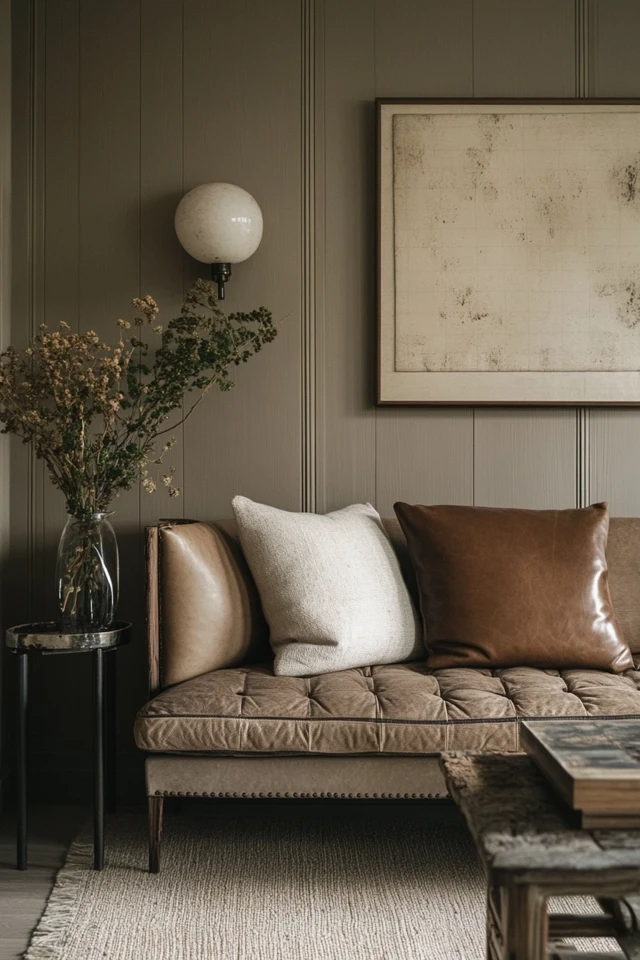Introduction
I’ll let you in on a little secret: leather accents are my not-so-hidden weapon when designing farmhouse spaces. I remember the first time I used leather in a farmhouse project. It was a pair of caramel-colored leather armchairs flanking a stone fireplace in a client’s living room. The effect was instant—a perfect mix of rugged warmth and timeless elegance. Since then, I’ve been a bit of a leather evangelist when it comes to farmhouse interiors.
Why leather? It’s the perfect material to bridge the gap between rustic and refined. Whether it’s a vintage leather ottoman, a tufted Chesterfield sofa, or even just some leather-wrapped drawer pulls, this material adds depth, texture, and warmth to any room. It’s also incredibly versatile and durable, making it a practical choice for busy households.
In this guide, I’ll share everything I’ve learned about incorporating leather into farmhouse rooms. From choosing the right shades and textures to styling tips and maintenance tricks, you’ll discover how to use leather accents to elevate your farmhouse design.
The Role of Leather in Farmhouse Design
Leather as a Textural Anchor
In farmhouse interiors, texture is everything. The interplay of wood, metal, and fabric creates the cozy yet sophisticated look we all love. Leather adds a unique textural layer—it’s smooth but rugged, sleek but earthy. It’s a material that feels substantial and grounding, which is why it works so well in farmhouse spaces.
When paired with other farmhouse staples like reclaimed wood, linen, and jute, leather acts as a visual anchor. It helps balance the light, airy feel of neutral color palettes with its rich, earthy tones.
Timeless Appeal Meets Practicality
Another reason leather works so well in farmhouse design is its timelessness. A well-worn leather chair or sofa only gets better with age, acquiring a patina that tells a story. Plus, leather is incredibly durable and easy to clean, making it a smart choice for high-traffic areas. Spilled wine or muddy paw prints? A quick wipe with a damp cloth, and you’re back in business.
Choosing the Right Leather for Your Farmhouse
Colors That Complement Farmhouse Palettes
When it comes to farmhouse interiors, not all leather is created equal. Stick to natural tones that complement the warm, neutral color palettes typical of farmhouse design. Here are a few classic choices:
- Cognac: A rich, caramel-like shade that pairs beautifully with white shiplap walls and rustic wood furniture.
- Saddle Brown: A deeper brown with earthy undertones, perfect for adding warmth to a room.
- Tan: A lighter shade that feels soft and inviting, ideal for smaller spaces.
- Black: Use sparingly as a bold contrast in predominantly light spaces.
Avoid overly polished or synthetic-looking leathers, as these can feel out of place in a farmhouse setting. Instead, opt for distressed or matte finishes that exude a lived-in charm.
Types of Leather to Consider
Not all leather is the same in terms of feel and durability. Here’s a quick breakdown of popular options:
- Full-Grain Leather: The highest quality, with a natural look that develops a rich patina over time.
- Top-Grain Leather: Slightly more processed but still durable and beautiful.
- Faux Leather: A budget-friendly and vegan alternative, though it doesn’t age quite like real leather.
Leather Accents in Different Farmhouse Spaces
Living Room: The Heart of Farmhouse Comfort
- Sofas and Armchairs: A tufted leather Chesterfield sofa is a showstopper in any farmhouse living room. Pair it with a reclaimed wood coffee table for a balanced look. If space is limited, try a leather armchair with a cozy throw draped over the back.
- Ottomans and Poufs: Use a leather ottoman as a coffee table alternative. It’s practical, stylish, and offers extra seating when needed.
Bedroom: Subtle Elegance
- Leather Headboards: A padded leather headboard adds a touch of luxury while maintaining the rustic charm of a farmhouse bedroom.
- Accent Chairs: A small leather chair in a reading nook makes the bedroom feel cozy and inviting.
- Decorative Accents: Leather-wrapped drawer pulls or a leather bench at the foot of the bed are small but impactful details.
Kitchen and Dining Room: Functional Style
- Barstools: Leather barstools at the kitchen island bring warmth and texture to this functional space.
- Dining Chairs: Mix leather dining chairs with a wooden farmhouse table for an eclectic yet cohesive look.
- Shelving Accents: Leather straps can be used as supports for open shelving, adding a unique touch to the kitchen.
Office and Den: A Nod to Tradition
- Desk Chairs: A vintage-style leather desk chair is both comfortable and stylish, perfect for a home office or study.
- Accessories: Think leather desk mats, pen holders, or even a leather-bound journal for small but meaningful details.
Styling Leather Accents in Farmhouse Design
Layering Textures
Leather shines when paired with contrasting textures. Here are some pairing ideas:
- With Linen: Soft linen cushions on a leather sofa add an inviting touch.
- With Wool: Drape a chunky knit throw over a leather armchair for instant coziness.
- With Wood: Surround a leather sofa with reclaimed wood furniture to emphasize the farmhouse aesthetic.
Mixing Old and New
Farmhouse design thrives on the juxtaposition of old and new. Pair a vintage leather chair with a modern metal floor lamp, or use leather-wrapped cabinet pulls alongside traditional wood cabinetry. This mix keeps your space feeling fresh and dynamic.
Seasonal Accents
Leather is versatile enough to work year-round. In fall, layer leather furniture with plaid or faux fur throws. In spring, lighten the look with pastel cushions or fresh greenery.
Maintenance Tips for Leather Accents
- Clean Regularly: Use a damp cloth to wipe away dust and spills. For deeper cleaning, opt for a leather-specific cleaner.
- Condition Annually: Keep leather supple and prevent cracking by applying a leather conditioner once a year.
- Avoid Direct Sunlight: Prolonged exposure to sunlight can fade and dry out leather, so position furniture away from windows or use curtains.
- Spot Test First: Always test cleaning products on an inconspicuous area to ensure they won’t damage the leather.
Picture Gallery
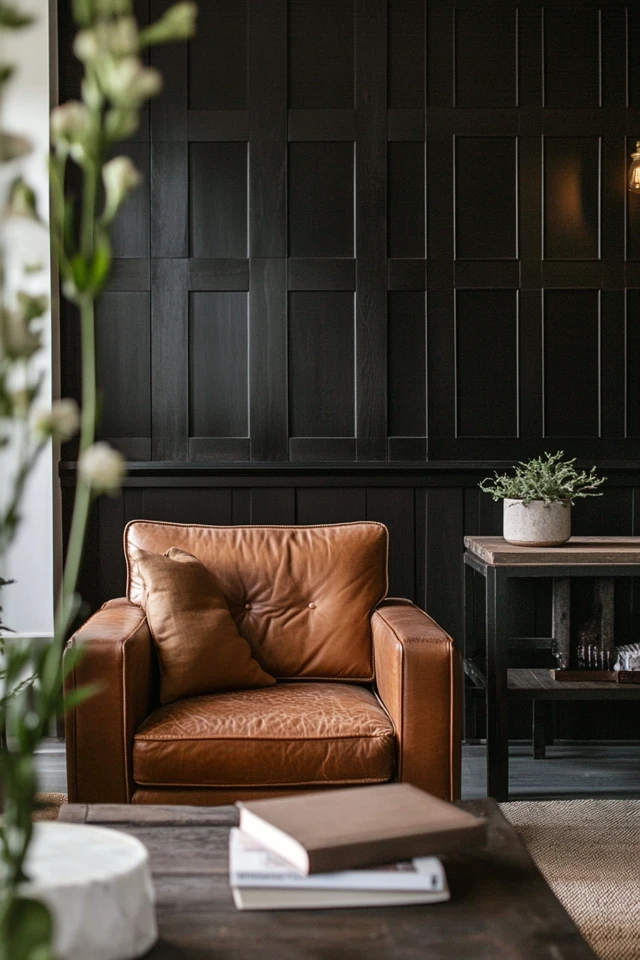
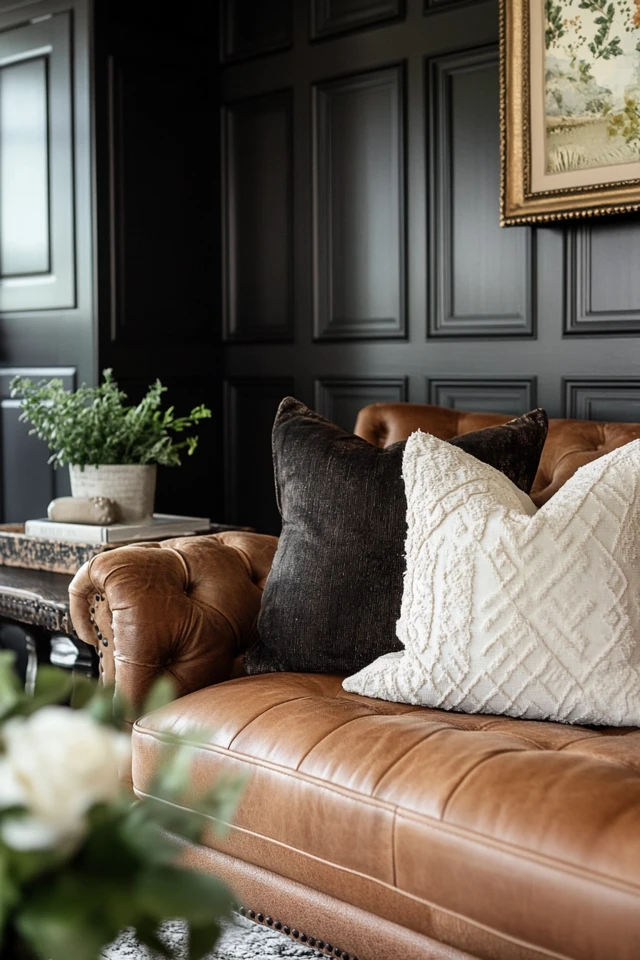

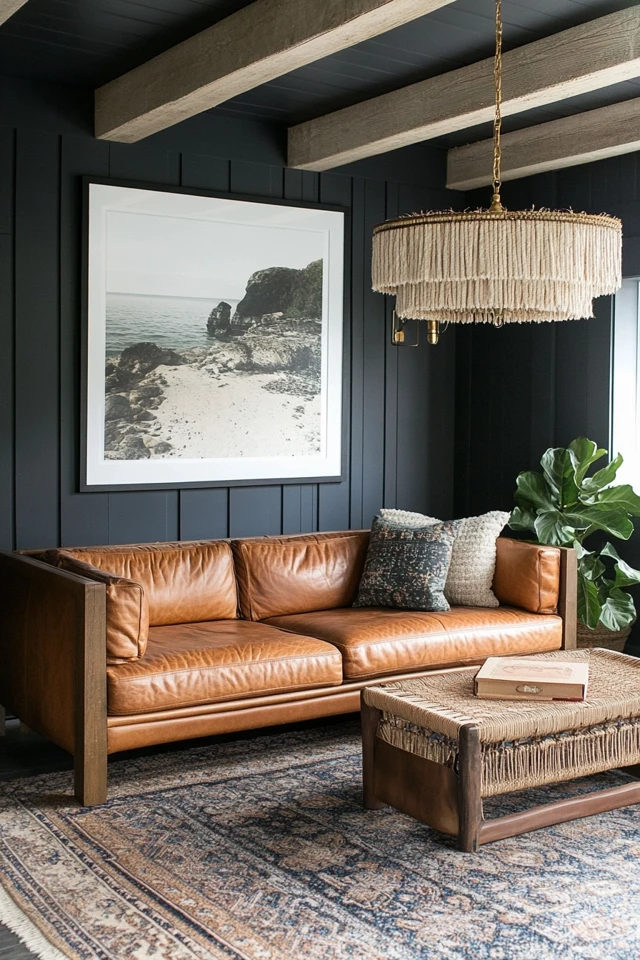
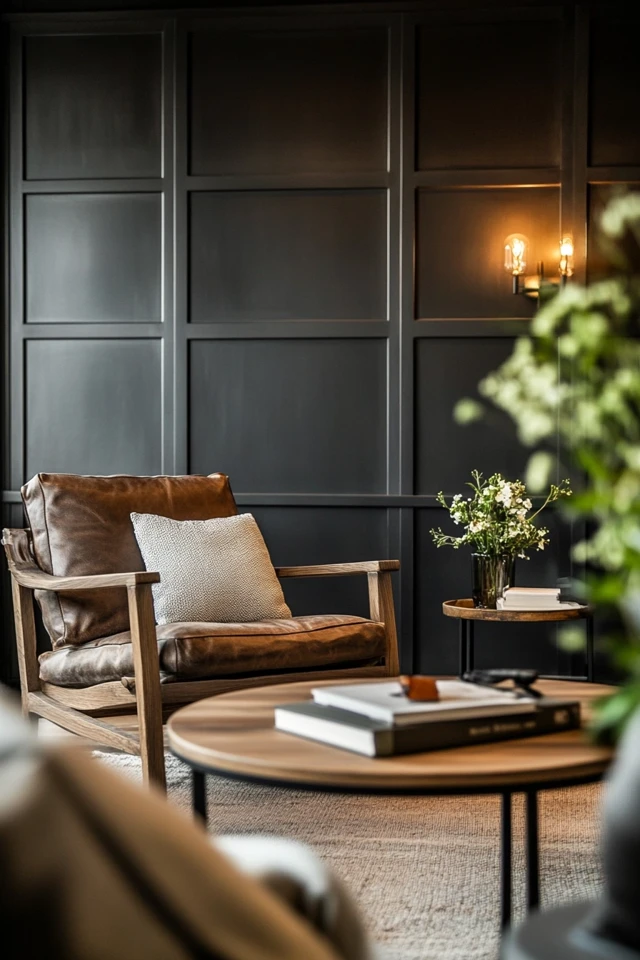
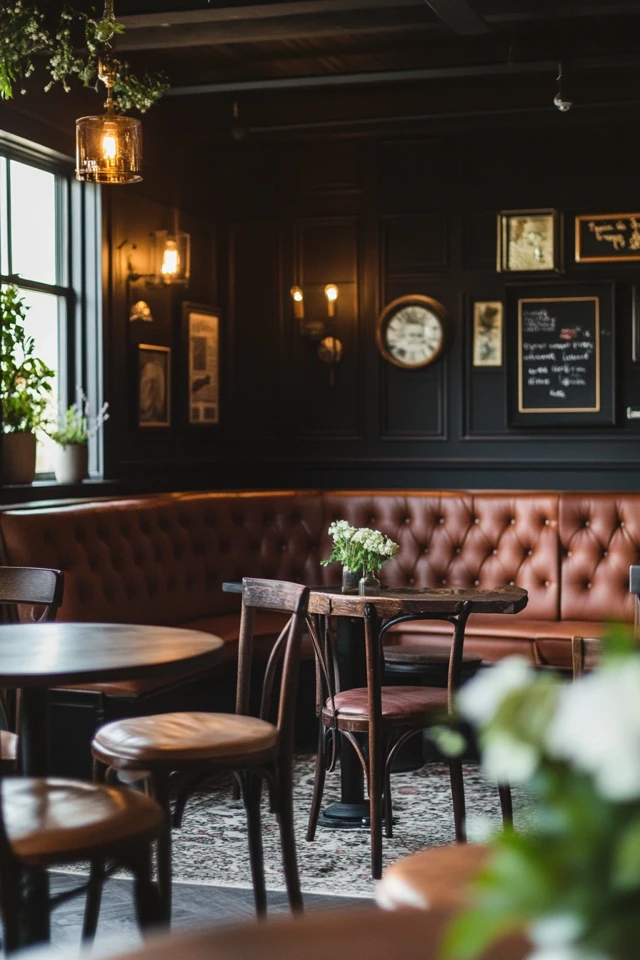
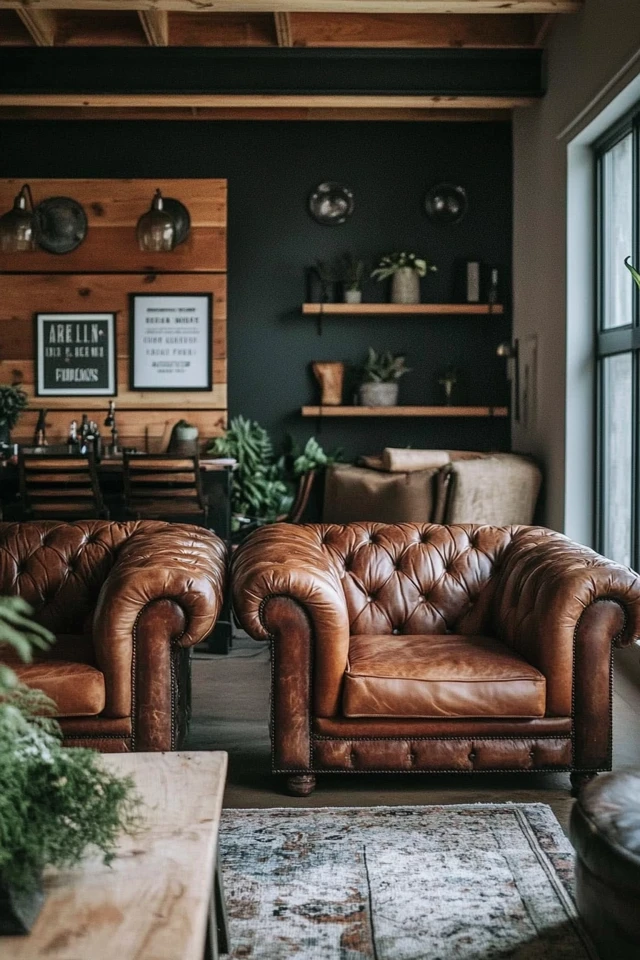
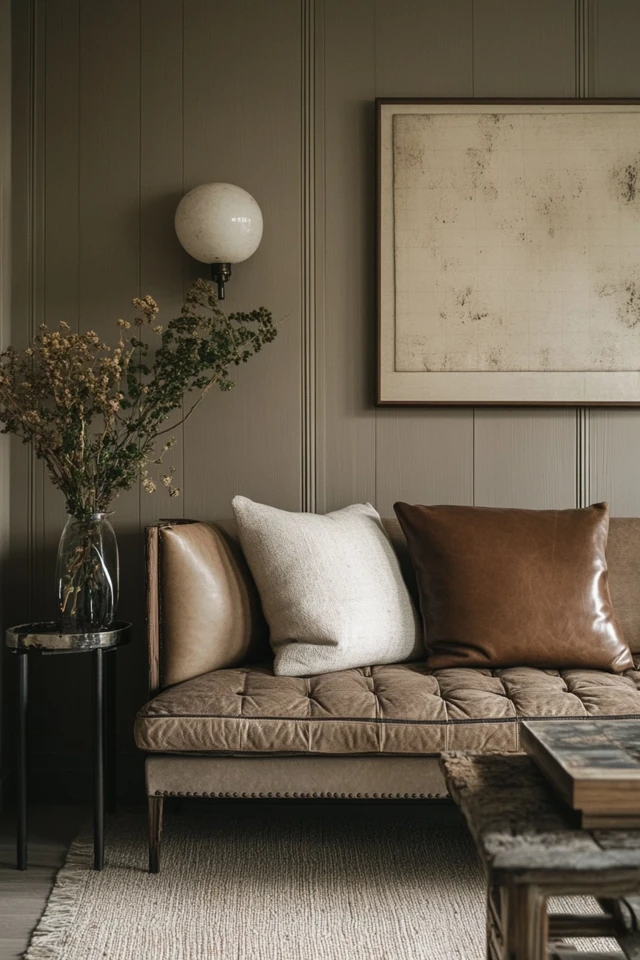
Conclusion
Incorporating leather accents into farmhouse rooms is one of the easiest ways to elevate your design while maintaining the warmth and charm that define this style. Whether it’s a statement piece like a leather sofa or small details like leather straps on shelving, this material adds a layer of sophistication and depth to any space.
Personally, I find leather to be one of the most rewarding materials to work with. It’s versatile, durable, and endlessly stylish. Every time I see a leather armchair paired with a chunky knit throw or a leather bench sitting under a reclaimed wood table, I’m reminded of why I fell in love with farmhouse design in the first place—it’s all about creating spaces that feel timeless, lived-in, and welcoming.
As you embark on your own farmhouse design journey, don’t be afraid to experiment with leather accents. Start small if you’re unsure—a leather pouf here, a barstool there—and build from there. Before you know it, you’ll have a space that’s as stylish as it is functional, perfect for everyday living and entertaining alike.
FAQ
What types of leather work best for farmhouse interiors?
Opt for natural, matte, or distressed leathers in earthy tones like cognac, tan, or saddle brown. These finishes complement the rustic charm of farmhouse design.
Can I use faux leather in a farmhouse space?
Yes! Faux leather is a budget-friendly and vegan option that can still provide the look and feel of real leather. Just make sure to choose a high-quality option for durability.
How do I clean and maintain leather furniture?
Wipe spills immediately with a damp cloth, and condition the leather once a year to prevent cracking. Avoid placing leather furniture in direct sunlight to protect it from fading.
Are leather accents suitable for small farmhouse spaces?
Absolutely! Leather accents like barstools, poufs, or small chairs can add warmth and texture to smaller rooms without overwhelming the space.
How can I mix leather with other farmhouse materials?
Pair leather with reclaimed wood, linen, and jute for a cohesive farmhouse look. Use leather as an anchor material to balance softer and rougher textures.

